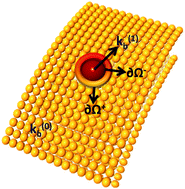Revisiting the curvature-mediated interactions between proteins in biological membranes
Abstract
Proteins embedded in soft biological membranes experience a long-range force mediated by elastic curvature deformations. The classical linearized Helfrich–Canham Hamiltonian based derivations reveal the nature of the force between a pair of proteins to be repulsive in the zero-temperature limit and the interaction potential is inversely proportional to the fourth power of the distance separating the inclusions. Such a result is the starting point to understand many-body interactions between proteins in biological membranes and the study of their clustering or, more broadly, self-organization. A key observation regarding this widely quoted result is that any two (mechanically rigid) proteins will experience an identical force. In other words, there is no specificity in the currently employed continuum models that purport to explain protein interactions. In this work we argue that each protein has a unique mechanical signature based on its interaction with the surrounding lipid bilayer membrane and cannot be treated as a non-specific rigid object. We modify the classical Helfrich–Canham theory of curvature elasticity to incorporate protein–membrane specificity, discuss the estimation of the new model parameters via atomistic simulations and re-evaluate the curvature-mediated force between proteins. We find that the incorporation of protein-specificity can reduce the interaction force by several orders of magnitude. Our result may provide at least one plausible reason behind why in some computational and experimental studies, a net attractive force between proteins is in evidence.


 Please wait while we load your content...
Please wait while we load your content...